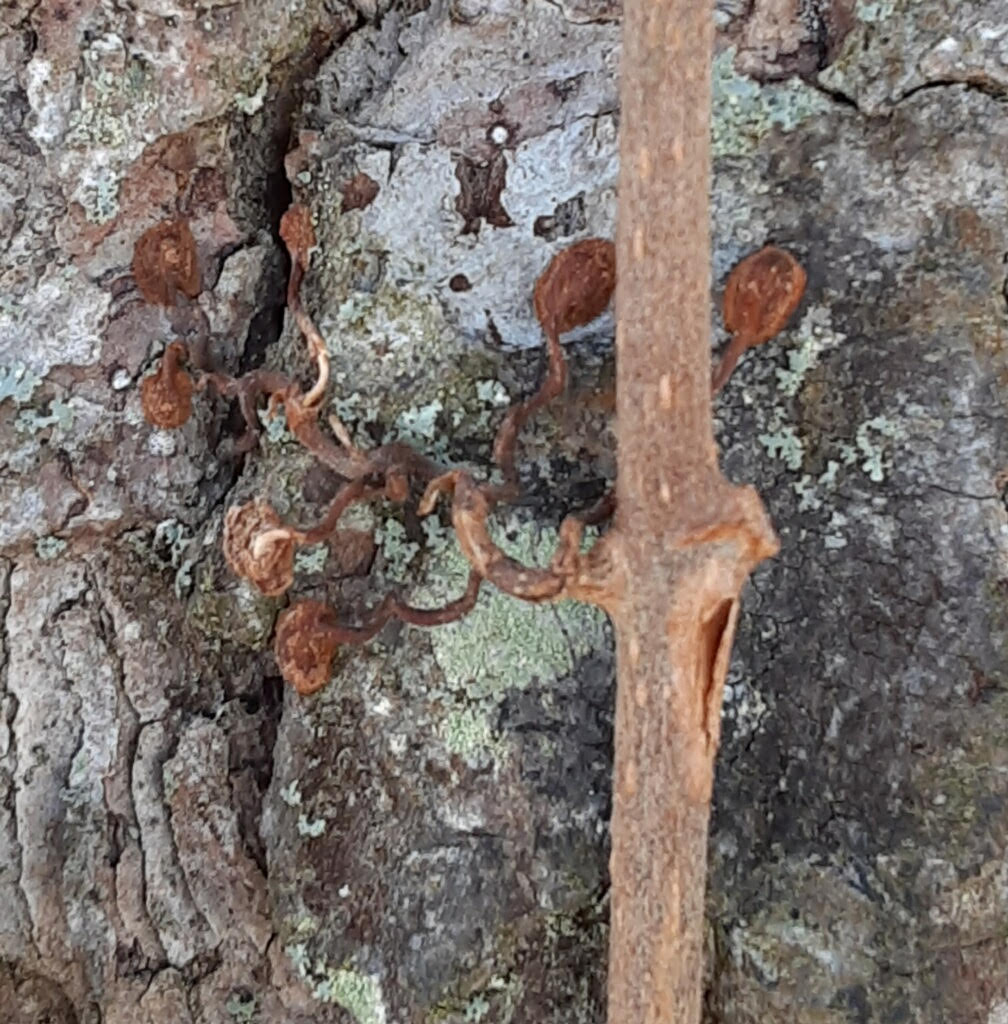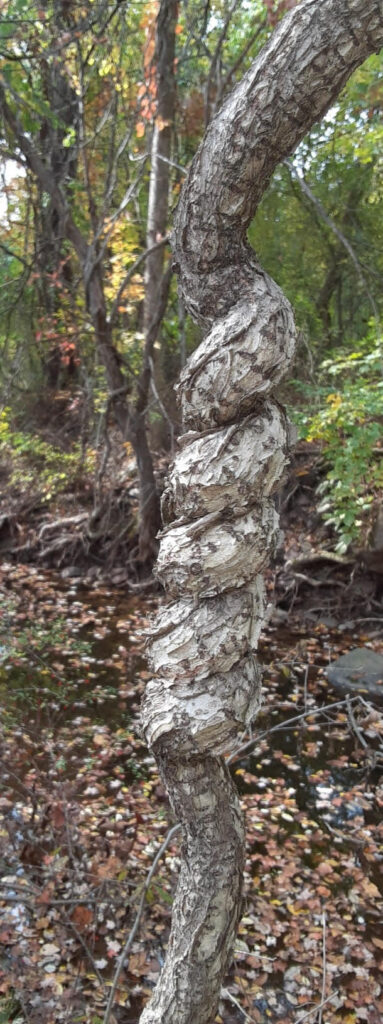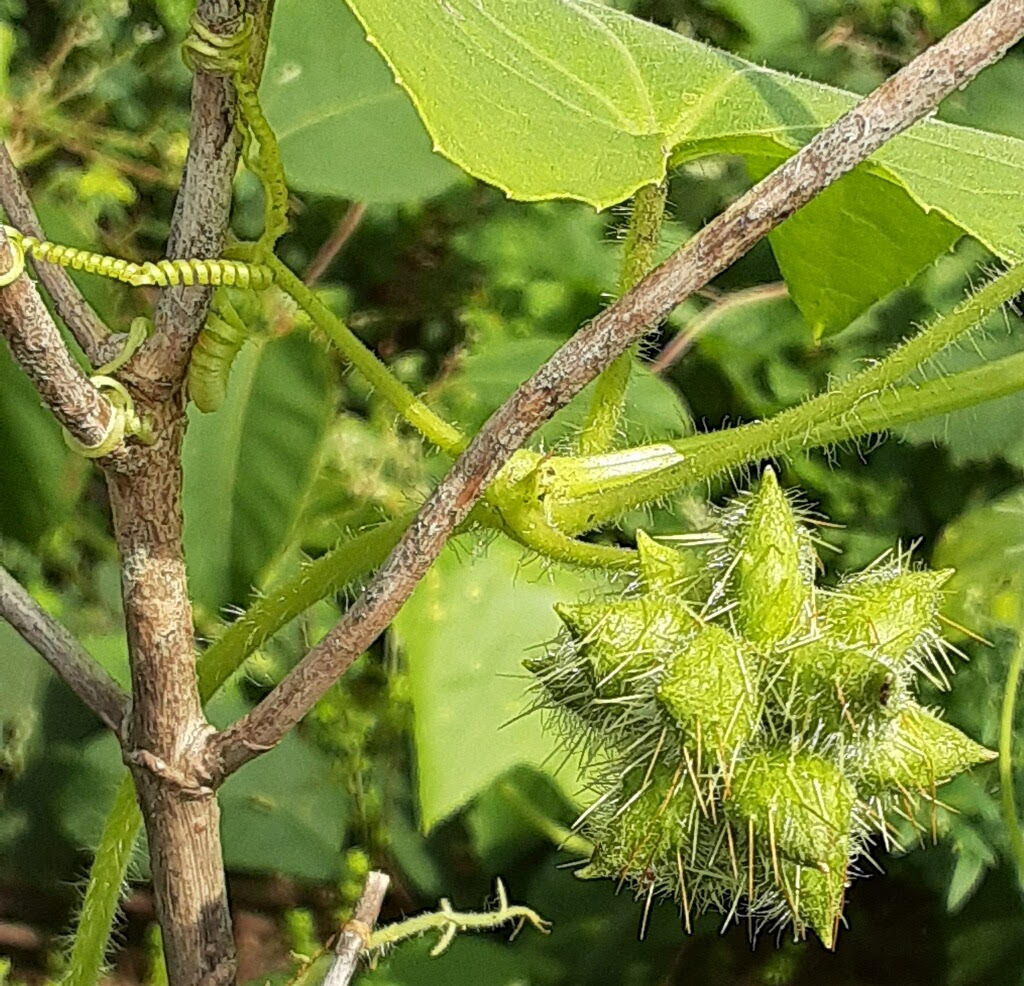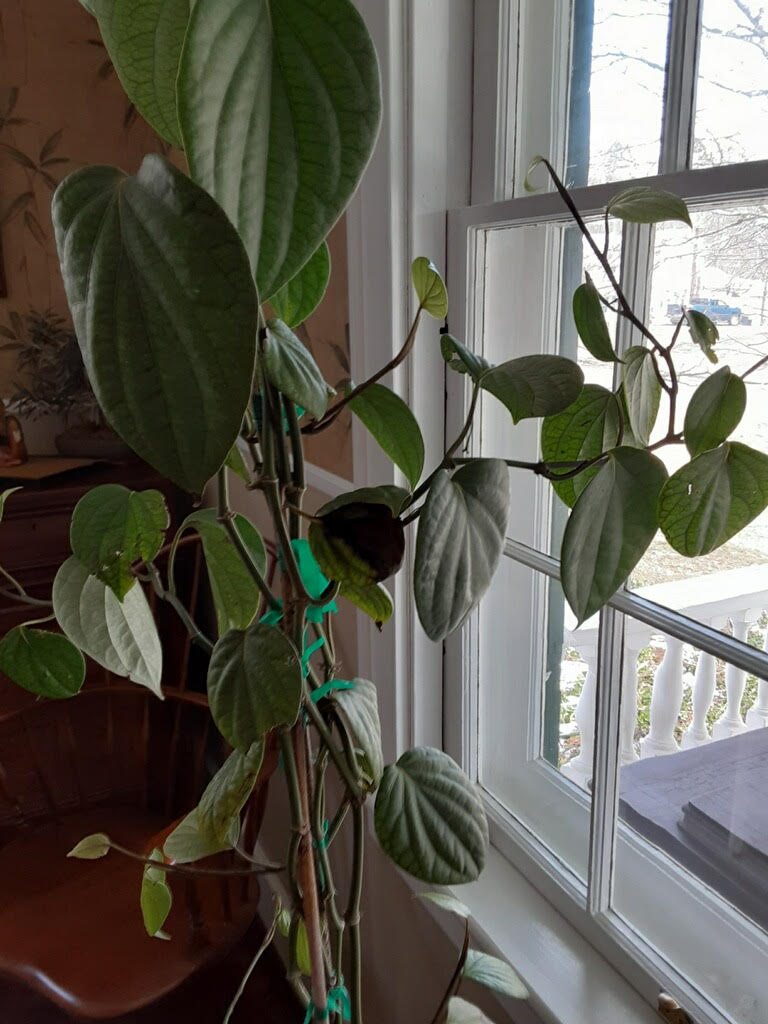By Susan Sprout
“On the Movements and Habits of Plants” is a book written by Charles Darwin and published in 1875. It was based on an essay he wrote ten years earlier. His passion for the design of plants and the diversity of their powers of movement are amazing to me – the little girl who was taught that animals were different from plants because plants couldn’t move! Ha! Their adaptations as climbing vines has carried some plants to new heights. Their “leafage” in forests can account for 40% of a forest’s leaf mass. Biomass – not so much – just 5%. What this tells us is that the thin vines sprint skyward for light and create huge numbers of leaves to absorb it. Climbing vines aren’t all in the same family, either. This key innovation evolved independently in different families, with different climbing methods. Their success may be based on the fact they don’t have to use their energy to grow big, heavy trunks. They use the backbones of trees, buildings, fences, cliff faces, other plants. Check out trees (or other items) with vines growing up them on your next walk. See if you can determine their special modus operandi for getting to the top.
Here are some of the ways they may use, with reference to the plants I wrote about in earlier blogs.
Aerial rootlets with adhesive discs that glue the growing plant to its support – Virginia Creeper.

Twining and wrapping their stems around a support – Bittersweet – It only twines counterclockwise.

Scrambling or shooting out long stems that arch out and loop over the backs of others – Tear Thumb. This plant also has thorns that help it hold on.
Tendrils or specialized shoots that coil and/or branch – Prickly Cucumber

Trailing over the ground to cover as much territory as they can – Ground Ivy
A new vine came to live at my home this winter, brought from a much warmer clime. It is Piper nigrum, the Black Pepper Vine, the species of plant that provides us with over a million tons of pepper yearly. After growing up to 13 feet for about four or five years, a pepper vine will produce flowers on hanging spikes that turn into small pungent fruits, maturing from green to red to black. Picked while unripe, the berries are boiled and dried before being sent on their way from the twenty-five countries that produce them – the world’s most traded spice!


